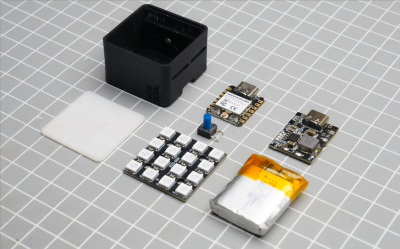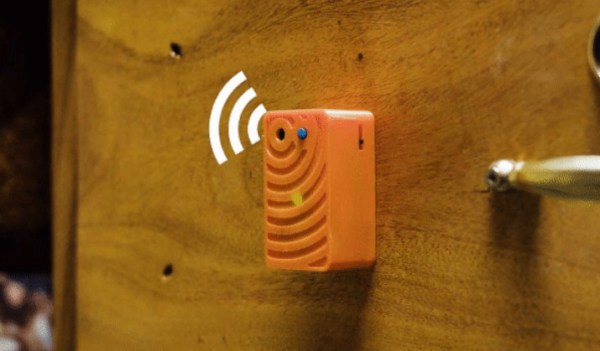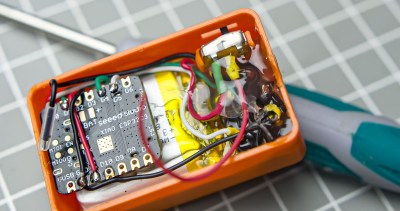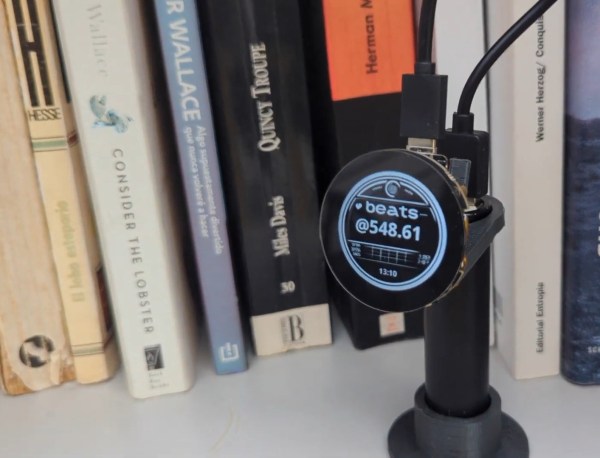The thing about human invention is that occasionally, two or more people think of an idea around the same time, and it’s difficult to determine who was first. Such is the case with Swatch’s Internet time, which is told in something called “.beats”. Rather than using hours and minutes, the solar day in the .beat system is divided into 1,000 parts equal to one minute in the French Revolutionary decimal time system, or 1 minute and 26.4 seconds of standard time.
Swatch came up with .beats to sell their special line of .beats watches. But they weren’t the only ones to divide the solar day this way. A few months before Swatch’s announcement of .beats time, a Argentinian drummer named [Charly Alberti] came up with the same idea and created a website for it to display the current Internet time of day.
The point of all this is that [Roni Bandini] has created an homage to both .beats and [Charly] in the form of a small clock. The main brain is a Seeed Studio Xiao nRF52840, with a Xiao TFT round display to show the time as well as a tribute to [Charly]. The 3D-printed stand incorporates a cylindrical power source. We think the black and white images, which [Roni] created with Dall-e, look fantastic.
Interestingly enough, the Xiao has no Internet connectivity; the time is set manually via hard-coded variable, and then the display’s RTC keeps track of the seconds and convert them to Internet time. Check out the brief build video after the break.
Interested in regular old metric time? Here’s a modern metric clock.
Continue reading “Swatch Internet-Time Clock Doesn’t Miss A Beat” →


















